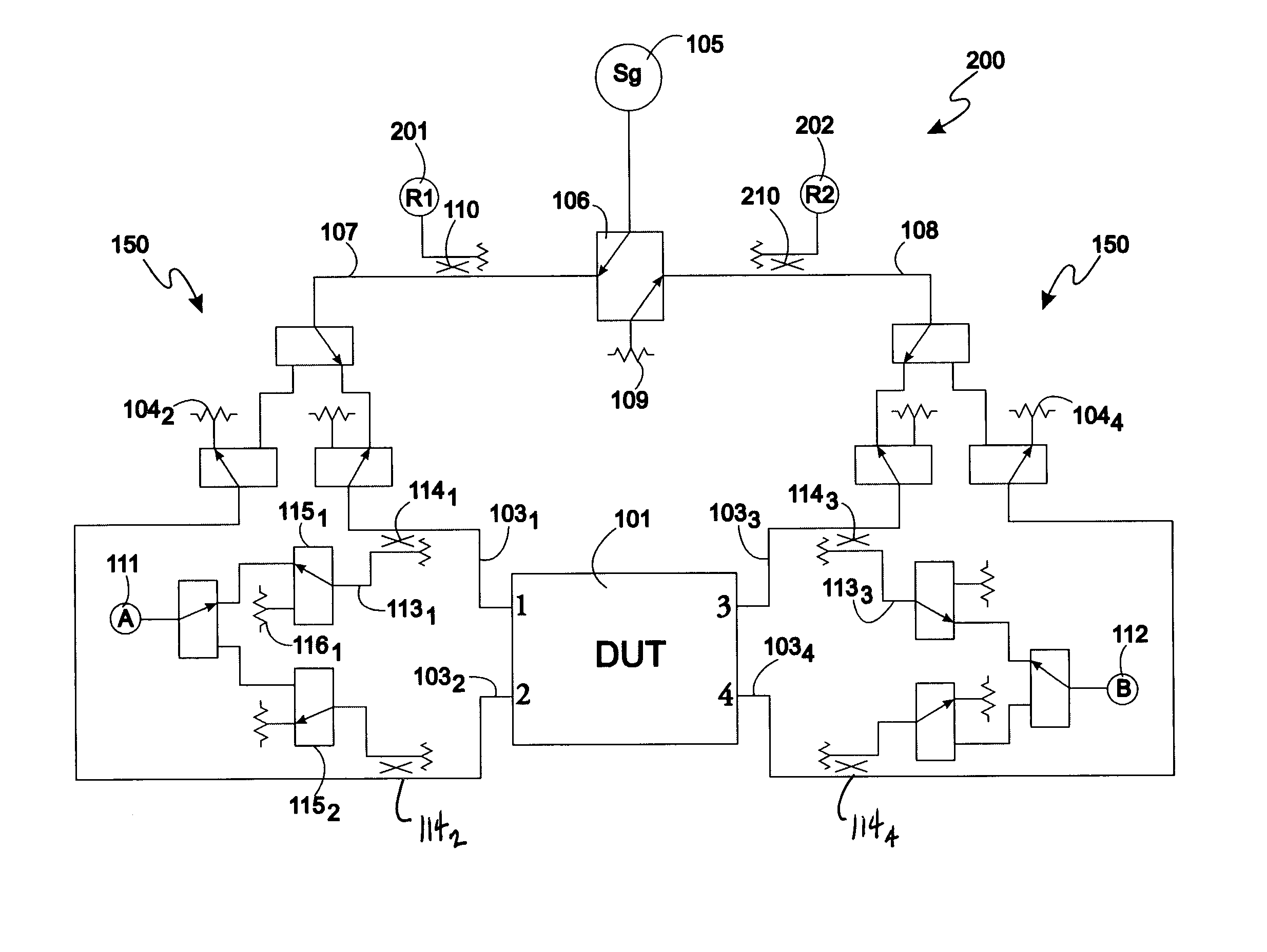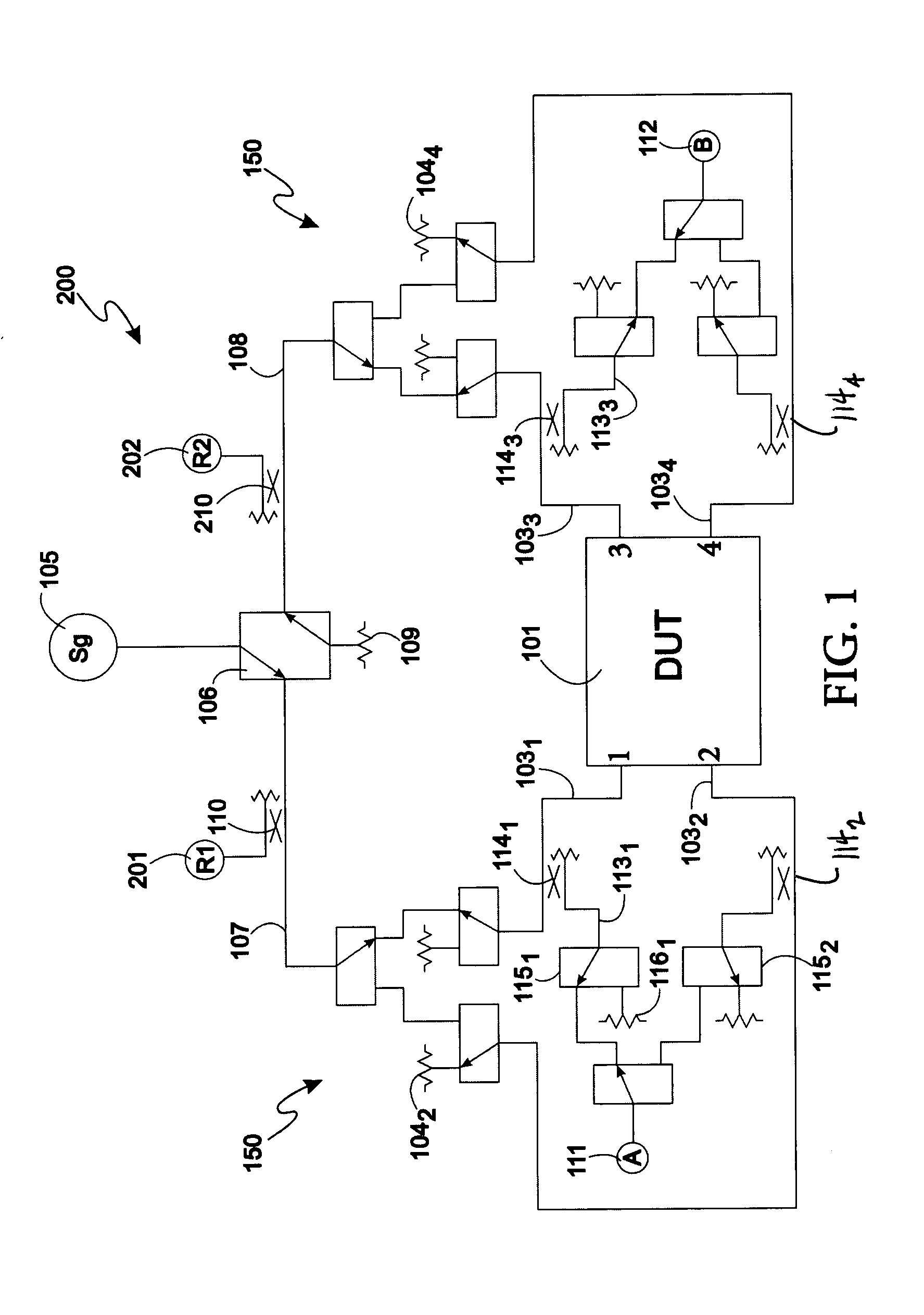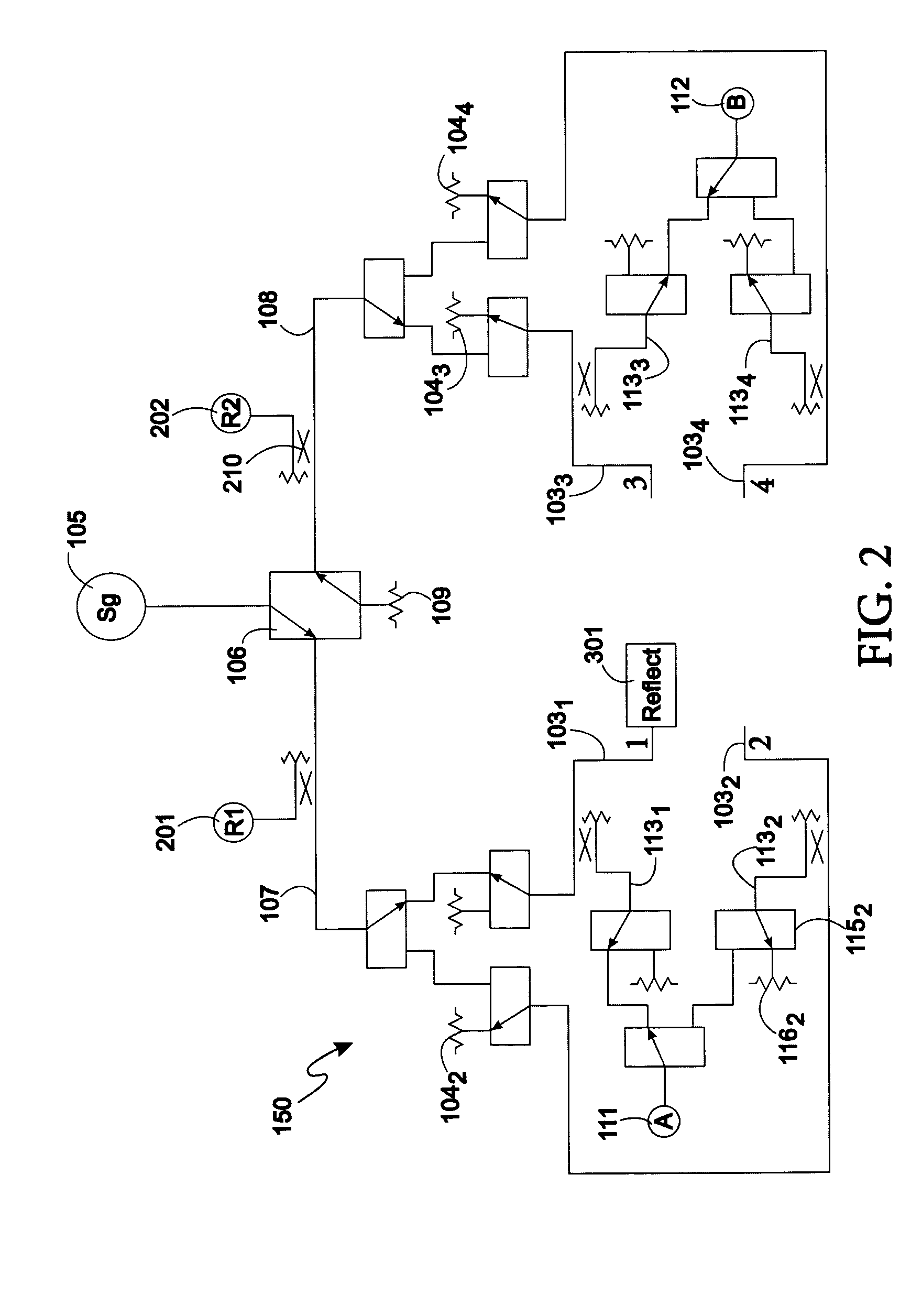Method and apparatus for measuring a device under test using an improved through-reflect-line measurement calibration
a technology of through reflect line and measurement calibration, which is applied in the direction of measurement devices, resistance/reactance/impedence, instruments, etc., can solve the problems of inability to meet the requirements of through calibration standards. the accuracy of calibration and measurement may not be as accurate as the manufacturer specifications of through calibration standards
- Summary
- Abstract
- Description
- Claims
- Application Information
AI Technical Summary
Problems solved by technology
Method used
Image
Examples
Embodiment Construction
U.S. Pat. No. 5,434,511 entitled “Electronic Microwave Calibration Device” (herein “the '511 patent”) teaches a method for correcting measured S-parameters to arrive at actual S-parameters for a measured device. The method uses twelve error terms calculated from a short-open-load (“SOLT”) calibration process. As one of ordinary skill in the art appreciates, a through-reflect-line (“TRL”) calibration process is also able to determine the twelve error terms from which actual S-parameters are determined based upon measured S-parameters of a device under test. The twelve error terms are: (1) forward directivity (“EDF”), (2) forward source match (“ESF”), (3) forward reflection tracking (“ERF”), (4) forward isolation (“EXR”), (5) forward load match (“ELF”), (6) forward transmission tracking (“ETF”), (7) reverse directivity (“EDR”), (8) reverse source match (“ESR”), (9) reverse reflection tracking (“ERR”), (10) reverse isolation (“EXR”), (11) reverse load match (“ELR”), and (12) reverse tr...
PUM
 Login to View More
Login to View More Abstract
Description
Claims
Application Information
 Login to View More
Login to View More - R&D
- Intellectual Property
- Life Sciences
- Materials
- Tech Scout
- Unparalleled Data Quality
- Higher Quality Content
- 60% Fewer Hallucinations
Browse by: Latest US Patents, China's latest patents, Technical Efficacy Thesaurus, Application Domain, Technology Topic, Popular Technical Reports.
© 2025 PatSnap. All rights reserved.Legal|Privacy policy|Modern Slavery Act Transparency Statement|Sitemap|About US| Contact US: help@patsnap.com



